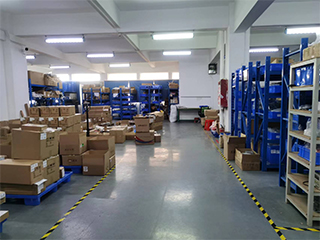Optimizing Wave Solder Bars for High-Quality Electronics Manufacturing
In the fast-paced world of electronics production, achieving flawless solder joints is critical for product reliability. Wave soldering remains a cornerstone of PCB assembly, particularly for through-hole components, and the quality of wave solder bars directly impacts manufacturing efficiency and product performance.
<a href="https://www.electricalvibgyor.com/ ">Wave Solder Bars for Electronics Manufacturing</a >
This in-depth guide examines the role of wave solder bars in electronics manufacturing, exploring material science, process optimization, and emerging trends that are shaping the future of soldering technology.
The Critical Role of Wave Solder Bars in PCB Assembly
Wave solder bars serve as the raw material that forms the molten solder wave in wave soldering machines. When properly selected and maintained, they:
Create durable intermetallic bonds between components and PCBs
Ensure consistent electrical conductivity across assemblies
Withstand thermal and mechanical stresses during product lifespan
Modern manufacturing demands have driven significant evolution in solder bar formulations, with lead-free alloys now dominating production lines worldwide.
Advanced Solder Bar Alloys for Modern Manufacturing
1. Eutectic Tin-Lead (Sn63/Pb37) – The Legacy Performer
Melting Point: 183°C (361°F)
Advantages:
Excellent wetting characteristics
Low defect rates in properly controlled processes
Extensive industry experience and data
Current Status: Still used in exempt military/aerospace applications
2. SAC305 (Sn96.5/Ag3.0/Cu0.5) – The Lead-Free Standard
Melting Range: 217-220°C (423-428°F)
Performance Characteristics:
Superior thermal fatigue resistance vs. Sn-Pb
Good mechanical strength
Requires tighter process controls
3. Emerging Alloy Innovations
Low-Silver SAC Variants (SAC0307, SAC105)
Reduce costly silver content while maintaining reliability
Bismuth-Containing Alloys
Lower melting points for energy-sensitive applications
Nickel-Modified Alloys
Improve barrel fill in plated through-holes
Technical Considerations for Solder Bar Selection
1. Thermal Profile Compatibility
Lead-free processes require 20-30°C higher peak temperatures
Component and substrate thermal limits must be respected
2. Copper Dissolution Rates
SAC alloys exhibit higher copper dissolution (0.2-0.3% per 1000 joints)
Requires regular copper concentration monitoring and pot management
3. Wetting Performance Factors
Silver content improves wetting but increases cost
Nitrogen inerting can compensate for reduced wetting in low-Ag alloys
Process Optimization with Wave Solder Bars
1. Solder Pot Maintenance Best Practices
Dross Management:
Automated skimming systems reduce solder loss
Nitrogen blanketing cuts dross formation by 40-60%
Contamination Control:
Monthly full-pot changes for high-volume production
Real-time impurity monitoring systems
2. Wave Dynamics Optimization
Chip Wave Parameters:
Typically 20-40mm width, 1-3mm height
Optimized for SMD retention
Laminar Wave Settings:
80-120mm width for thorough through-hole filling
Flow rate adjustments for different board densities
3. Flux-Wave Interaction
Alcohol-based fluxes dominate lead-free processes
Solid content typically 1.5-3.0% for no-clean applications
Spray fluxing requires precise targeting for optimal results
Troubleshooting Common Wave Soldering Defects
Defect TypeRoot CausesCorrective ActionsInsufficient Hole FillLow solder temp, fast conveyor speedIncrease pot temp 5-10°C, reduce speed 0.1-0.3m/minSolder BallsFlux volatility issues, poor preheatAdjust preheat profile, evaluate flux chemistryIcicles/FlagsExcessive solder exposure, poor board supportOptimize wave height, implement better board fixturesPad LiftingThermal shock to laminateGradual preheat ramping, lower ΔT across boardThe Future of Wave Solder Bar Technology
1. Smart Soldering Systems
IoT-enabled solder pots with real-time alloy composition analysis
Machine learning algorithms for predictive maintenance
2. Sustainable Soldering Solutions
Recyclable solder bar packaging
Closed-loop dross recovery systems
3. Nano-Enhanced Alloys
Nanoparticle additives to improve wetting without silver
Self-healing solder joints for extreme environments
Strategic Implementation for Manufacturing Excellence
To fully leverage wave solder bars in electronics manufacturing, companies should:
Conduct Comprehensive Process Audits
Map thermal profiles across different product families
Benchmark defect rates against industry standards
Invest in Operator Training
Certified soldering technician programs
Cross-training for process engineers
Establish Rigorous Quality Protocols
Daily solder pot sampling and analysis
Statistical process control (SPC) for critical parameters
Engage in Supplier Partnerships
Collaborate with solder manufacturers on custom alloys
Implement just-in-time delivery for fresh solder bars
By mastering these elements, manufacturers can achieve:
First-pass yields exceeding 99.5%
Solder joint reliability surpassing 10,000 thermal cycles
Annual solder consumption reductions of 15-20%
Conclusion: Precision Soldering for the Electronics Age
The strategic application of wave solder bars represents both a fundamental process and an opportunity for competitive advantage in electronics manufacturing. As product complexity increases and sustainability requirements tighten, the companies that will thrive are those that treat soldering not as a commodity process, but as a precision metallurgical operation requiring scientific management.
By combining advanced materials science with data-driven process control, forward-thinking manufacturers are transforming their wave soldering operations into centers of excellence that deliver consistent quality while pushing the boundaries of what's possible in electronics assembly. The future belongs to those who understand that in the world of high-reliability electronics, every solder joint matters.
In the fast-paced world of electronics production, achieving flawless solder joints is critical for product reliability. Wave soldering remains a cornerstone of PCB assembly, particularly for through-hole components, and the quality of wave solder bars directly impacts manufacturing efficiency and product performance.
<a href="https://www.electricalvibgyor.com/ ">Wave Solder Bars for Electronics Manufacturing</a >
This in-depth guide examines the role of wave solder bars in electronics manufacturing, exploring material science, process optimization, and emerging trends that are shaping the future of soldering technology.
The Critical Role of Wave Solder Bars in PCB Assembly
Wave solder bars serve as the raw material that forms the molten solder wave in wave soldering machines. When properly selected and maintained, they:
Create durable intermetallic bonds between components and PCBs
Ensure consistent electrical conductivity across assemblies
Withstand thermal and mechanical stresses during product lifespan
Modern manufacturing demands have driven significant evolution in solder bar formulations, with lead-free alloys now dominating production lines worldwide.
Advanced Solder Bar Alloys for Modern Manufacturing
1. Eutectic Tin-Lead (Sn63/Pb37) – The Legacy Performer
Melting Point: 183°C (361°F)
Advantages:
Excellent wetting characteristics
Low defect rates in properly controlled processes
Extensive industry experience and data
Current Status: Still used in exempt military/aerospace applications
2. SAC305 (Sn96.5/Ag3.0/Cu0.5) – The Lead-Free Standard
Melting Range: 217-220°C (423-428°F)
Performance Characteristics:
Superior thermal fatigue resistance vs. Sn-Pb
Good mechanical strength
Requires tighter process controls
3. Emerging Alloy Innovations
Low-Silver SAC Variants (SAC0307, SAC105)
Reduce costly silver content while maintaining reliability
Bismuth-Containing Alloys
Lower melting points for energy-sensitive applications
Nickel-Modified Alloys
Improve barrel fill in plated through-holes
Technical Considerations for Solder Bar Selection
1. Thermal Profile Compatibility
Lead-free processes require 20-30°C higher peak temperatures
Component and substrate thermal limits must be respected
2. Copper Dissolution Rates
SAC alloys exhibit higher copper dissolution (0.2-0.3% per 1000 joints)
Requires regular copper concentration monitoring and pot management
3. Wetting Performance Factors
Silver content improves wetting but increases cost
Nitrogen inerting can compensate for reduced wetting in low-Ag alloys
Process Optimization with Wave Solder Bars
1. Solder Pot Maintenance Best Practices
Dross Management:
Automated skimming systems reduce solder loss
Nitrogen blanketing cuts dross formation by 40-60%
Contamination Control:
Monthly full-pot changes for high-volume production
Real-time impurity monitoring systems
2. Wave Dynamics Optimization
Chip Wave Parameters:
Typically 20-40mm width, 1-3mm height
Optimized for SMD retention
Laminar Wave Settings:
80-120mm width for thorough through-hole filling
Flow rate adjustments for different board densities
3. Flux-Wave Interaction
Alcohol-based fluxes dominate lead-free processes
Solid content typically 1.5-3.0% for no-clean applications
Spray fluxing requires precise targeting for optimal results
Troubleshooting Common Wave Soldering Defects
Defect TypeRoot CausesCorrective ActionsInsufficient Hole FillLow solder temp, fast conveyor speedIncrease pot temp 5-10°C, reduce speed 0.1-0.3m/minSolder BallsFlux volatility issues, poor preheatAdjust preheat profile, evaluate flux chemistryIcicles/FlagsExcessive solder exposure, poor board supportOptimize wave height, implement better board fixturesPad LiftingThermal shock to laminateGradual preheat ramping, lower ΔT across boardThe Future of Wave Solder Bar Technology
1. Smart Soldering Systems
IoT-enabled solder pots with real-time alloy composition analysis
Machine learning algorithms for predictive maintenance
2. Sustainable Soldering Solutions
Recyclable solder bar packaging
Closed-loop dross recovery systems
3. Nano-Enhanced Alloys
Nanoparticle additives to improve wetting without silver
Self-healing solder joints for extreme environments
Strategic Implementation for Manufacturing Excellence
To fully leverage wave solder bars in electronics manufacturing, companies should:
Conduct Comprehensive Process Audits
Map thermal profiles across different product families
Benchmark defect rates against industry standards
Invest in Operator Training
Certified soldering technician programs
Cross-training for process engineers
Establish Rigorous Quality Protocols
Daily solder pot sampling and analysis
Statistical process control (SPC) for critical parameters
Engage in Supplier Partnerships
Collaborate with solder manufacturers on custom alloys
Implement just-in-time delivery for fresh solder bars
By mastering these elements, manufacturers can achieve:
First-pass yields exceeding 99.5%
Solder joint reliability surpassing 10,000 thermal cycles
Annual solder consumption reductions of 15-20%
Conclusion: Precision Soldering for the Electronics Age
The strategic application of wave solder bars represents both a fundamental process and an opportunity for competitive advantage in electronics manufacturing. As product complexity increases and sustainability requirements tighten, the companies that will thrive are those that treat soldering not as a commodity process, but as a precision metallurgical operation requiring scientific management.
By combining advanced materials science with data-driven process control, forward-thinking manufacturers are transforming their wave soldering operations into centers of excellence that deliver consistent quality while pushing the boundaries of what's possible in electronics assembly. The future belongs to those who understand that in the world of high-reliability electronics, every solder joint matters.
Optimizing Wave Solder Bars for High-Quality Electronics Manufacturing
In the fast-paced world of electronics production, achieving flawless solder joints is critical for product reliability. Wave soldering remains a cornerstone of PCB assembly, particularly for through-hole components, and the quality of wave solder bars directly impacts manufacturing efficiency and product performance.
<a href="https://www.electricalvibgyor.com/ ">Wave Solder Bars for Electronics Manufacturing</a >
This in-depth guide examines the role of wave solder bars in electronics manufacturing, exploring material science, process optimization, and emerging trends that are shaping the future of soldering technology.
The Critical Role of Wave Solder Bars in PCB Assembly
Wave solder bars serve as the raw material that forms the molten solder wave in wave soldering machines. When properly selected and maintained, they:
Create durable intermetallic bonds between components and PCBs
Ensure consistent electrical conductivity across assemblies
Withstand thermal and mechanical stresses during product lifespan
Modern manufacturing demands have driven significant evolution in solder bar formulations, with lead-free alloys now dominating production lines worldwide.
Advanced Solder Bar Alloys for Modern Manufacturing
1. Eutectic Tin-Lead (Sn63/Pb37) – The Legacy Performer
Melting Point: 183°C (361°F)
Advantages:
Excellent wetting characteristics
Low defect rates in properly controlled processes
Extensive industry experience and data
Current Status: Still used in exempt military/aerospace applications
2. SAC305 (Sn96.5/Ag3.0/Cu0.5) – The Lead-Free Standard
Melting Range: 217-220°C (423-428°F)
Performance Characteristics:
Superior thermal fatigue resistance vs. Sn-Pb
Good mechanical strength
Requires tighter process controls
3. Emerging Alloy Innovations
Low-Silver SAC Variants (SAC0307, SAC105)
Reduce costly silver content while maintaining reliability
Bismuth-Containing Alloys
Lower melting points for energy-sensitive applications
Nickel-Modified Alloys
Improve barrel fill in plated through-holes
Technical Considerations for Solder Bar Selection
1. Thermal Profile Compatibility
Lead-free processes require 20-30°C higher peak temperatures
Component and substrate thermal limits must be respected
2. Copper Dissolution Rates
SAC alloys exhibit higher copper dissolution (0.2-0.3% per 1000 joints)
Requires regular copper concentration monitoring and pot management
3. Wetting Performance Factors
Silver content improves wetting but increases cost
Nitrogen inerting can compensate for reduced wetting in low-Ag alloys
Process Optimization with Wave Solder Bars
1. Solder Pot Maintenance Best Practices
Dross Management:
Automated skimming systems reduce solder loss
Nitrogen blanketing cuts dross formation by 40-60%
Contamination Control:
Monthly full-pot changes for high-volume production
Real-time impurity monitoring systems
2. Wave Dynamics Optimization
Chip Wave Parameters:
Typically 20-40mm width, 1-3mm height
Optimized for SMD retention
Laminar Wave Settings:
80-120mm width for thorough through-hole filling
Flow rate adjustments for different board densities
3. Flux-Wave Interaction
Alcohol-based fluxes dominate lead-free processes
Solid content typically 1.5-3.0% for no-clean applications
Spray fluxing requires precise targeting for optimal results
Troubleshooting Common Wave Soldering Defects
Defect TypeRoot CausesCorrective ActionsInsufficient Hole FillLow solder temp, fast conveyor speedIncrease pot temp 5-10°C, reduce speed 0.1-0.3m/minSolder BallsFlux volatility issues, poor preheatAdjust preheat profile, evaluate flux chemistryIcicles/FlagsExcessive solder exposure, poor board supportOptimize wave height, implement better board fixturesPad LiftingThermal shock to laminateGradual preheat ramping, lower ΔT across boardThe Future of Wave Solder Bar Technology
1. Smart Soldering Systems
IoT-enabled solder pots with real-time alloy composition analysis
Machine learning algorithms for predictive maintenance
2. Sustainable Soldering Solutions
Recyclable solder bar packaging
Closed-loop dross recovery systems
3. Nano-Enhanced Alloys
Nanoparticle additives to improve wetting without silver
Self-healing solder joints for extreme environments
Strategic Implementation for Manufacturing Excellence
To fully leverage wave solder bars in electronics manufacturing, companies should:
Conduct Comprehensive Process Audits
Map thermal profiles across different product families
Benchmark defect rates against industry standards
Invest in Operator Training
Certified soldering technician programs
Cross-training for process engineers
Establish Rigorous Quality Protocols
Daily solder pot sampling and analysis
Statistical process control (SPC) for critical parameters
Engage in Supplier Partnerships
Collaborate with solder manufacturers on custom alloys
Implement just-in-time delivery for fresh solder bars
By mastering these elements, manufacturers can achieve:
First-pass yields exceeding 99.5%
Solder joint reliability surpassing 10,000 thermal cycles
Annual solder consumption reductions of 15-20%
Conclusion: Precision Soldering for the Electronics Age
The strategic application of wave solder bars represents both a fundamental process and an opportunity for competitive advantage in electronics manufacturing. As product complexity increases and sustainability requirements tighten, the companies that will thrive are those that treat soldering not as a commodity process, but as a precision metallurgical operation requiring scientific management.
By combining advanced materials science with data-driven process control, forward-thinking manufacturers are transforming their wave soldering operations into centers of excellence that deliver consistent quality while pushing the boundaries of what's possible in electronics assembly. The future belongs to those who understand that in the world of high-reliability electronics, every solder joint matters.
0 Comments
·0 Shares
·140 Views
·0 Reviews




